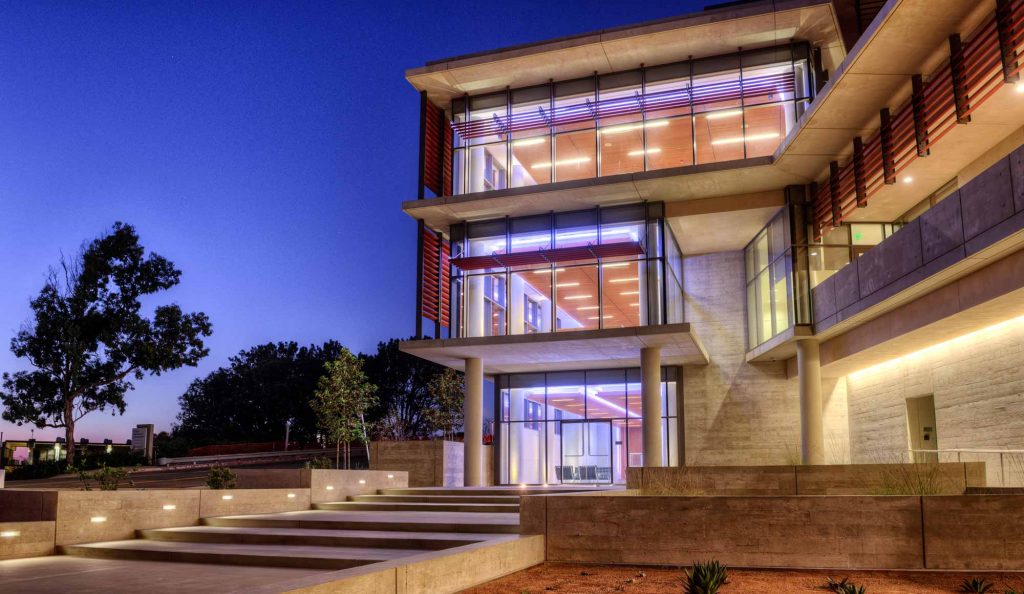CalCOFI Laboratories
The SWFSC laboratory is located at the northern end of the Scripps Institution of Oceanography, UC San Diego campus, directly across La Jolla Shores Drive from MESOM.
The facility contains an experimental aquarium, large animal necropsy lab, specimen processing lab, photogrammetry lab, ichthyoplankton lab, genetic labs, physiology labs, oceanographic labs, specimen archives, electronic workshops, a large tank for testing new sampling technologies, library, conference rooms, and offices for 275 scientists and support staff.
The new facility allows SWFSC to continue its legacy surveys and monitoring programs while incorporating new technologies in the provision of advice on the conservation and management of living marine resources in the California Current, Eastern Tropical Pacific and Antarctic ecosystems.
The design of the new laboratory calls for photovoltaic cells, elaborate water retention systems, recycled materials and green roofs planted with California coastal chaparral, and is expected to earn a LEED Gold Level Certification.

Marine Ecosystem Sensing, Observation and Modeling (MESOM)
The MESOM laboratory is the home of the SIO portion of CalCOFI. It is located at the northern end of the Scripps Institution of Oceanography, UC San Diego campus, directly across the street from NOAA SWFSC.
The LEED Platinum MESOM laboratory provides an environment for coastal ecosystem biologists and oceanographers to work collaboratively on an integrated approach to understanding California’s coastal waters. Results of the research conducted in this building & SWFSC provide the foundation for new approaches to management of the State of California’s marine ecosystems and their resources.
MESOM opened in August 2013. This 3-story, 40,000 sq ft research center is composed of wet and dry laboratories, private offices, and conference rooms. Installed on the MESOM rooftop is a 61-kilowatt solar panel system and a 6kW/10kWh battery energy storage system. The renewable energy produced at this facility goes directly to the local electrical grid, providing solar energy to its neighboring community. The energy produced by MESOM’s solar panels is enough to power 40 homes and prevents 128,000 pounds of CO2 from entering the Earth’s atmosphere each year.
